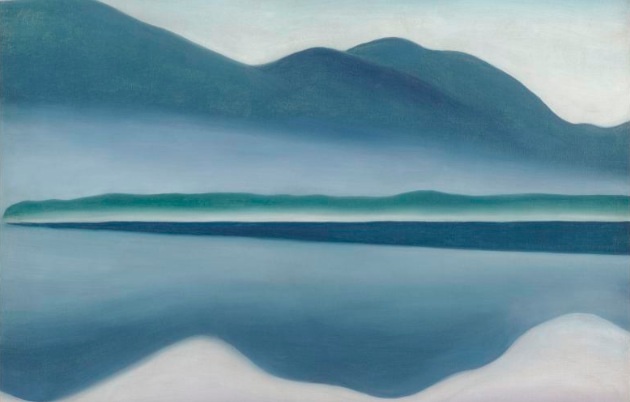In San Francisco we currently have the pride of hosting “Modern Nature,” the first major exhibition to examine the body of work that Georgia O’Keeffe created based on her experiences at Lake George in upstate New York. During her thirties and forties she lived part of each year at the lake, which served as a rural retreat and provided the subject matter for much of her art.
The exhibit at the de Young museum was a revelation. In seeing her evolving modern approach to depicting the natural world, I couldn’t help but wonder what we could learn as impact filmmakers from Georgia’s time on the lake, which is considered to be the most prolific and transformative time of her eight-decade career.
This is what I took away from her brilliance:
1. Offer a taste. Georgia’s bold, color-filled abstractions always leave you with a sense, a taste, and an experience of the subject she is exploring. As an art student she became bored by the exercise of realistic painting. So much so that after mastering the techniques, she left painting altogether. It was only years later that she came back to the canvas with the intention of conveying the strong impression that nature had on her. Through keen observation, she masterfully extracted the essence of her experience with nature. This was one of the greatest gifts she left us and a lesson that can be equally well applied to short film. With the time constraints you work with when producing films at the micro scale, you can’t paint a full picture. The only way we can succeed is to convey a taste, a sense, an experience.
2. Make it Intimate. Her paintings have often been interpreted as deeply personal and autobiographical expressions. It was not about thoroughly conveying the subject matter, but rather trying to share her intimate point of view. The power of this is the person-to-person connection. As human beings, we will never tire of this. The stories we tell, no matter how universal, can often be more compelling if told through a first-person lens.
3. Approach with reverence: Someone once said – it may have been Rudolf Steiner – that you protect what you love. “O’Keeffe’s platonic ideal of nature, perfected at Lake George, helped to promote a respect and reverence for the natural world that resonates with contemporary viewers—especially in California, home to Yosemite Valley, the Sierra Nevada, and Lake Tahoe,” noted Timothy Anglin Burgard, the Ednah Root Curator in Charge of American Art at the Fine Arts Museums of San Francisco. In impact filmmaking this translates into making the emphasis of the piece the the beauty and the preciousness of what we are inviting our audience to protect.

